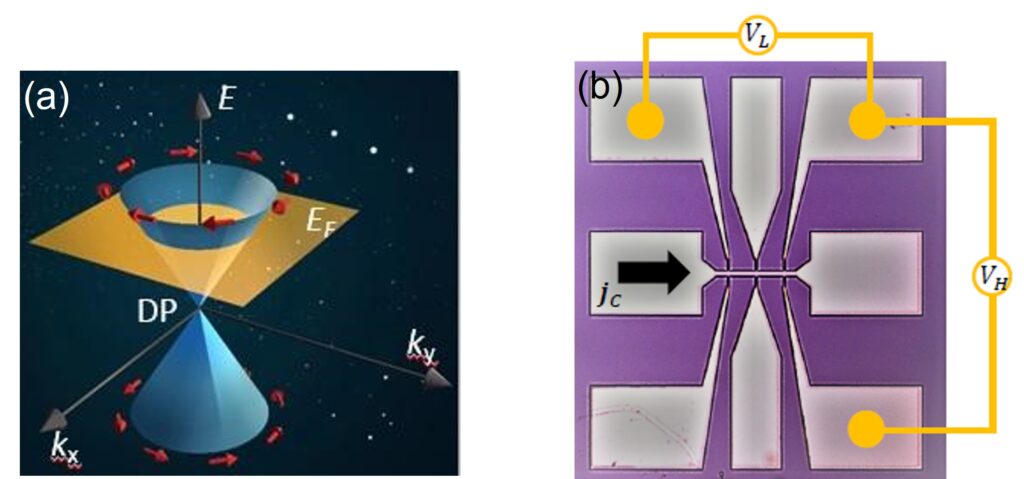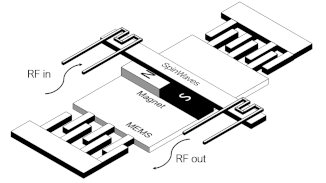
Control of spin transport in the two-dimensional limit of the ferroelectric Rashba semiconductor SnTe
We have available positions for Master students interested in a thesis work at PoliFab, the micro and nanofabrication facility of PoliMi. The duration of the thesis period is about 9 months.
The work develops within the PRIN 2017 project TWEET (ToWards fErroElectricity in Two-dimensions), coordinated by CNR-SPIN (Chieti) and funded by MIUR. The project is inspired by the global thrust towards miniaturization and by the ubiquitous research in two-dimensional materials (2D). The goal of the project is the full control of ferroelectricity in few-layers films of multifunctional materials compatible with the standard silicon-based CMOS technology we all have in our pockets. The thesis @Polifab will focus on the chalcogenide SnTe (and GeTe). Belonging to ferroelectric Rashba semiconductors, SnTe is predicted to show a giant charge-to-spin conversion (spin Hall effect) controllable by the ferroelectric polarization. Moreover, topologically-protected states have also been predicted and demonstrated, making SnTe relevant also as topological material.Tin telluride would allow for the non-volatile electric control of the spin transport in innovative spintronic devices beyond CMOS. Depending on the starting date and on the student preferences, the thesis work with deal with one or a few of the following activities: (1) epitaxial growth and characterization of 2D films of SnTe; (2) study of ferroelectricity in 2D SnTe; (3) realization of devices based on the ferroelectric control of the spin transport (spin valves, Datta-Das transistors, and other systems).
Responsible: Christian Rinaldi
Partners: Dr. Silvia Picozzi, CNR-SPIN (L’Aquila). Dr. Fabio Miletto, CNR-Na (Napoli). Dr. Ivana Vobornik, ELETTRA Synchrotron radiation facility (Trieste). Dr. Stefano Cecchi and Dr. Raffaella Calarco, Department of Epitaxy of the Paul Drude Institute (Berlin).
Berry phase engineering and spin-momentum locking control in topological materials and interfaces

The aim of this thesis work is to fabricate and characterize topological materials (such as Bi2Se3 and related compounds) and interfaces with antiferromagnetic and/or ferroelectric layers, to control the electrical transport in innovative devices exploiting the natural spin–momentum locking (correlation between spin orientation and momentum in topologically protected surface states) via Berry curvature engineering and symmetry breaking. During the thesis work, the student will fabricate the devices, exploiting the well-established deposition and patterning skills at Polifab, and characterize them by advanced magneto-electrical techniques in the Nanomag laboratory, exploiting bilinear magneto-resistance (BMER) and anomalous Hall effect (AHE) to probe the three-dimensional spin texture and interfacial exchange coupling in topological materials and heterostructures. The design and the interpretation of magneto-transport experiments will be supported by theoretical modelling and transport calculations in collaboration with a theoretical group.
Responsible: Matteo Cantoni
Partners: M. Cuoco, Spin-CNR (Salerno)
Integration of functional materials with MEMS
Integration of advanced MEMS structures and magnonics for new radio-frequency processing systems. This thesis work is part of the European project M&MEMS (https://mandmems.eu/). This project aims to develop MEMS devices having integrated permanent magnets to be combined with new magnonics devices able to process radio frequency signal. The combination of these two systems can lead to reconfiguable RF devices for next generation telecomunication platform. The thesis work will comprehend simulation and design of new hybrid devices, the realization of such devices at PoliFAB and the characterization using RF signal processing.
Development of micron-scale energy harvester. This thesis work is part of the European project MetaVEH (https://www.metaveh.com ). This project aims to develop new generation energy-harvesters combining MEMS devices and functional materials. The thesis work will have a strong focus on fabrication and integration of functional materials (piezo/magnets) with MEMS devices. At the same time, the student will take part in the design and layout of new prototypes of energy harvesters through analytical model and simulation software (Comsol Multiphysics).
Responsible: Riccardo Bertacco
Supervisor: Federico Maspero
Partners: TU Kaiserlaurern, STMicroelectronics, CNRS-Thales Paris, Imec, TU Monaco, Nokia and more.
Development of a lab-on-chip diagnostic test for malaria (Tid Mekii)

This thesis project deals with the development of a lab-on-chip diagnostic test for malaria that combines magnetic separation and electrical impedance detection. Malaria parasite modifies the magnetic properties of infected red blood cells (RBCs) and produces characteristic hemozoin nanocrystals. These malaria biomarkers exhibit paramagnetic properties, allowing for magnetophoretic separation, both of isolated crystals and infected RBCs containing them, from the other blood components. The idea of the proposed diagnostic test is based on the specific attraction of hemozoin crystals and infected RBCs towards a chip surface, where Ni-micro pillars allows the magnetophoretic capture and the electrodes on top, because of the insulating behaviour of a red blood cell with respect to the blood plasma, can detect the presence of i-RBCs by an impedance variation. During the thesis work the student will design and develop the silicon chip fabrication processes and the experiments of magnetophoretic capture, exploiting cleanroom microfabrication equipment and techniques present at PoliFab, and the collaboration with biomedical and clinical partners.
Responsible: Riccardo Bertacco
Partners: DEIB @ PoliMi; Ospedale Sacco (Milano) .
Fabrication of free-standing magnetic membranes for spin polarimetry

The aim of this thesis work is to fabricate a two-dimensional spin filter, able to add the spin resolution to k- and energy-resolved photoemission experiments (ARPES), performed at radiation synchrotron facilities. The basic idea is to interpose a ferromagnetic membrane between the exit slit and the 2D detector of an electron analyser. This membrane will present a different transmission for electron with spin parallel or antiparallel to the magnetic moment of the magnetic layer, thus performing the spin filtering mechanism. In addition, the membrane must be self-sustaining, mechanically robust and almost transparent to the electron beam, in order to achieve a good spin selectivity without reducing too much the transmission. During the thesis work, the student will design and fabricate the membrane, by the combined use of deposition and lithography techniques, aiming at optimizing the geometry (ultrathin micrometric-size membranes embedded in a rigid framework) and the materials to achieve the desired targets (robustness, transmission and magnetic properties). To characterize the spin filtering properties, the spin-dependent transmission of a spin polarized electron beam, produced by an electron gun available at PoliFab, will be measured. Finally, first prototypes of the spin filters will be tested, with a true photoemission setup, at the APE beamline at the synchrotron light source of Elettra (Trieste).
Responsible: Matteo Cantoni
Partners: ELETTRA Synchrotron radiation facility (Trieste)
